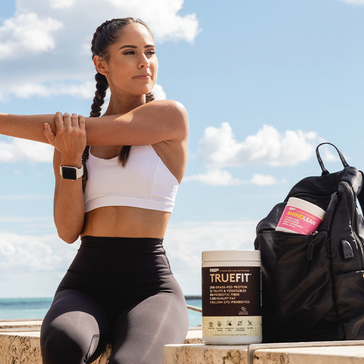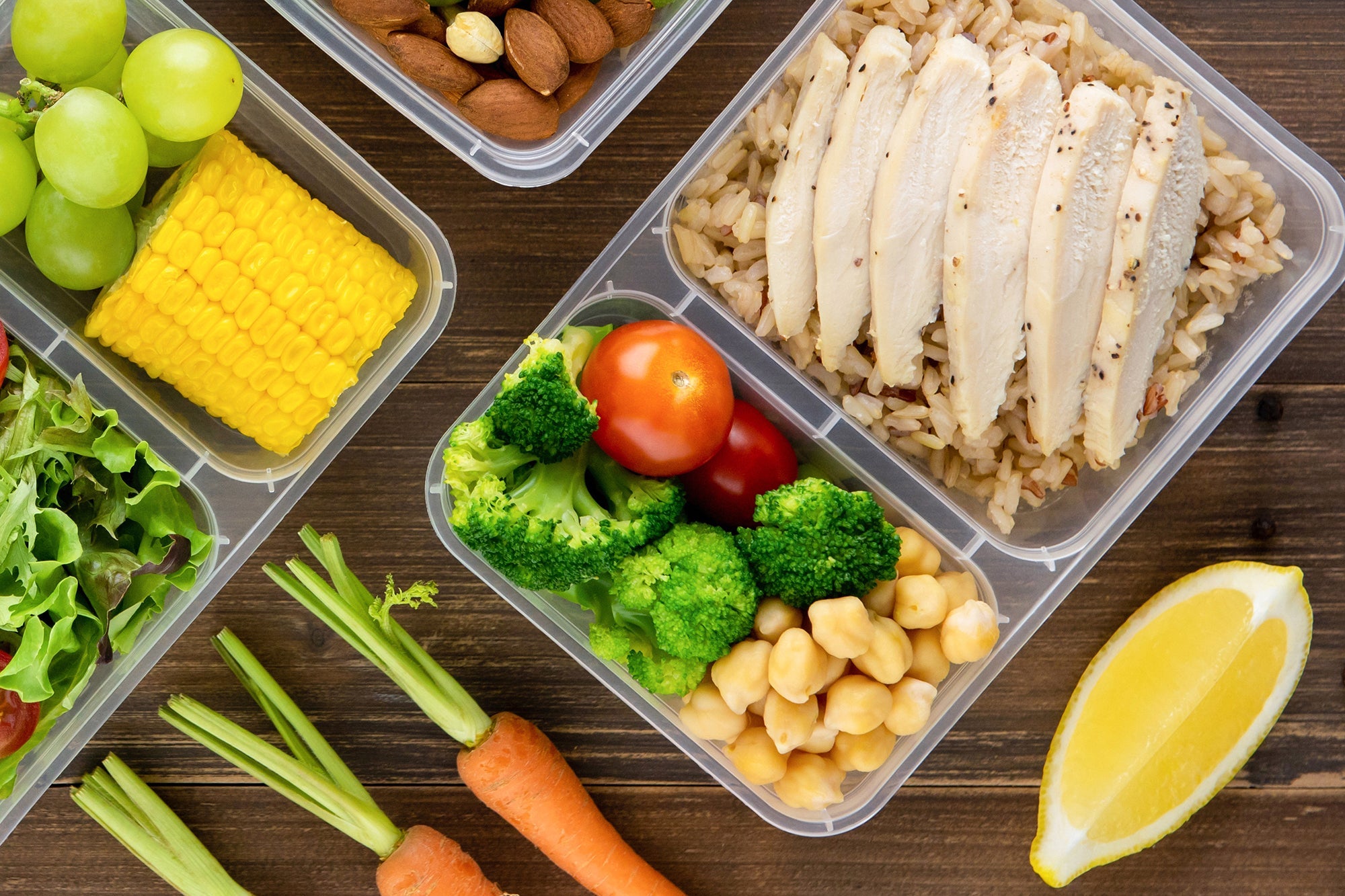Everything You Need to Know About Counting Macros
By Emily Shiffer
One of the biggest buzzwords in nutrition right now is ‘macros’. You’ve probably noticed the phrase ‘counting macros’ on everything from your social media feed to health headlines. Essentially, ‘counting macros’ is tracking every calorie you eat, broken down by macronutrients, that can help you achieve certain physical or athletic goals. It can be used to lose weight, gain muscle, and fuel properly during athletic events. Here’s everything you need to know about counting macros.
What are macros?
“’Macros’ are short for macronutrients -- the nutrients you need on a daily basis in the most relative abundance (as opposed to micronutrients, which are needed in much smaller amounts),” says Monica Auslander Moreno, MS, RD, LD/N, nutrition consultant for RSP Nutrition. “They refer to carbohydrates, fats, and proteins.”
Carbs and proteins contain 4 calories per gram, while fats contain 9 calories per gram. And that is important for keeping an accurate count on your macros. (https://www.nal.usda.gov/fnic/how-many-calories-are-one-gram-fat-carbohydrate-or-protein)
What are the benefits of counting macros?
“The main benefit of counting macros is knowing if you hit your target range or not (for nutrition goals),” says Cindy Dallow, Ph.D., RD, sports dietitian in Colorado.
Counting macros can aid you in whatever nutrition goal you have and is mostly an asset for active people pursuing changes in their body or looking to fuel for activities properly.
“Active people need a certain amount of carbohydrate to have the energy to perform at a high intensity or to go exercise for a long period of time. There are set formulas for estimating how much a person needs, so counting macro's helps you know if you hit the target range or not,” says Dr. Dallow. “It's the same with protein, e.g., a certain level of intake is necessary to prevent muscle breakdown and to support muscle protein synthesis so counting protein grams lets you know if you consumed enough protein.”
How do you count your macros?
If you’re looking to attempt counting macros on your own, get ready to do some math.
The first step is to determine how much energy you need per day based on how much activity you do, called your total daily energy expenditure (TDEE).
To do this, Dr. Dallow suggest using the Mifflin-St. Jeor equation:
- Men: calories/day = 10 x weight (kg) + 6.25 x height (cm) – 5 x age (y) + 5
- Women: calories/day = 10 x weight (kg) + 6.25 x height (cm) – 5 x age (y) – 161
This is based on how much activity you do a day. You can use the
- Sedentary: x 1.2 (limited exercise)
- Lightly active: x 1.375 (light exercise less than three days per week)
- Moderately active: x 1.55 (moderate exercise most days of the week)
- Very active: x 1.725 (hard exercise every day)
- Extra active: x 1.9 (strenuous exercise two or more times per day)
Once you know your TDEE, you can start figuring out your macro needs.
You should fall someplace in the ranges below, according to the Food and Nutrition Board of the Institutes of Medicine (IOM) https://www.ncbi.nlm.nih.gov/pubmed/16004827:
- Carbs:45–65% of total calories
- Fats:20–35% of total calories
- Proteins:10–35% of total calories
Unless you are an endurance or elite athlete, you’ll need to do some more efficient calculating.
“Calculating macro needs using a g/kg basis is much more specific and best for athletes,” says Dr. Dallow. “I use the g/kg method for all of my athletes because I want them to have a target range to aim for each day for each macronutrient,” says Dr. Dallow. “For athletes that tend to not eat enough, I want to make sure they consume the minimum amount of carbohydrate and protein to support their training.”
She does this calculating for each macronutrient.
“After calculating their macro needs using the g/kg basis, I add up the calories by multiplying the carb and protein ranges by four (since these contain 4 calories per gram) and the fat range by 9 (since these contain 9 calories per gram). By having an upper target, it helps to keep the athlete from eating too much which can be a problem too.”
You can also track your macros with this Macro Calculator!
Of course, if you’re looking to lose weight or gain muscle, your calorie intake will decrease or increase. It just depends on your goals.
How should you keep track of your macros?
“There are several good apps out there on the market to track macros, such as My Fitness Pal,” says Dr. Dallow.
Of course, if you are looking to achieve certain body goals (like muscle gains or weight loss), you may benefit from partnering with a dietary expert.
“Many people do not know the formulas for calculating g/kg macro targets so it's best to work with a Registered Dietitian (specifically a Certified Specialist in Sports Dietetics, CSSD) to get the most accurate recommendations. I use an online food logging system with my clients where they can record their food intake and macros are instantly calculated,” says Dr. Dallow.
Are there any downsides to counting macros?
As you can see, counting macros can get…complicated. And if you’re tracking everything to the tiniest amount, it may lead to obsessive thoughts about food.
“Counting macros does not account for the quality of the macronutrient and can cause obsessive thoughts,” says Auslander Moreno. “For example, 20 grams of sugar, a carbohydrate, is vastly nutritiously different from 20 grams of carbohydrates from legumes. People like to maintain and exert some semblance of control in their diet, and counting can seem very gratifying.”
Keeping that in perspective may be one of the most difficult things about tracking your macros.
“Counting macros can cause a perversion of the relationship towards food. You lose sight of, say, strawberries as yummy and sweet and a summer seasonal fruit and you began to reduce them in your thoughts to ‘x grams of carbs’,” says Auslander Moreno. “There are also not standardized measurements for macronutrients that all medical professionals can agree on for healthy, non-inpatient people beyond the recommended daily allowances (RDAs).”
Should you try counting your macros?
It depends on your goals and if it is a sustainable nutrition strategy for your lifestyle.
“If you're concerned that you are not getting enough of a macronutrient, refer to the RDAs and you can use a tracker, temporarily, to see where you fall,” says Auslander Moreno. “I would much rather people focus on the food quality and thoughts surrounding a food they eat, their consistent intake over time, their intuitive hunger and fullness, and their fitness activities. Eating is not supposed to be itemized like math; it's a fluid concept.”
And Dr. Dallow agrees that counting macros should not be a long-term thing.
“I only recommend counting macros for a specified period of time. Counting macros is not a good idea for anyone with a current or past eating disorder,” says Dr. Dallow.
But counting your macros can help you lose weight efficiently, gain muscle, or fuel properly so you can perform your best. If you’re looking to achieve specific goals, it may be best to connect with a nutrition expert when it comes to determining the number of macros you’ll need and the best way to track them.
“The amount of each macronutrient necessary for good health and optimal sports performance varies from person to person and depends on a lot of factors that need to be taken into consideration when determining macro targets,” says Dr. Dallow. “This is why it's best to work with a sports dietitian who understands the complexities involved and who has the experience to estimate a person's macro needs accurately.”









